Intel Rocket Lake (14nm) Review: Core i9-11900K, Core i7-11700K, and Core i5-11600K
by Dr. Ian Cutress on March 30, 2021 10:03 AM EST- Posted in
- CPUs
- Intel
- LGA1200
- 11th Gen
- Rocket Lake
- Z590
- B560
- Core i9-11900K
Gaming Tests: Final Fantasy XV
Upon arriving to PC, Final Fantasy XV: Windows Edition was given a graphical overhaul as it was ported over from console. As a fantasy RPG with a long history, the fruits of Square-Enix’s successful partnership with NVIDIA are on display. The game uses the internal Luminous Engine, and as with other Final Fantasy games, pushes the imagination of what we can do with the hardware underneath us. To that end, FFXV was one of the first games to promote the use of ‘video game landscape photography’, due in part to the extensive detail even at long range but also with the integration of NVIDIA’s Ansel software, that allowed for super-resolution imagery and post-processing effects to be applied.
In preparation for the launch of the game, Square Enix opted to release a standalone benchmark. Using the Final Fantasy XV standalone benchmark gives us a lengthy standardized sequence to record, although it should be noted that its heavy use of NVIDIA technology means that the Maximum setting has problems - it renders items off screen. To get around this, we use the standard preset which does not have these issues. We use the following settings:
- 720p Standard, 1080p Standard, 4K Standard, 8K Standard
For automation, the title accepts command line inputs for both resolution and settings, and then auto-quits when finished. As with the other benchmarks, we do as many runs until 10 minutes per resolution/setting combination has passed, and then take averages. Realistically, because of the length of this test, this equates to two runs per setting.
| AnandTech | Low Resolution Low Quality |
Medium Resolution Low Quality |
High Resolution Low Quality |
Medium Resolution Max Quality |
| Average FPS | 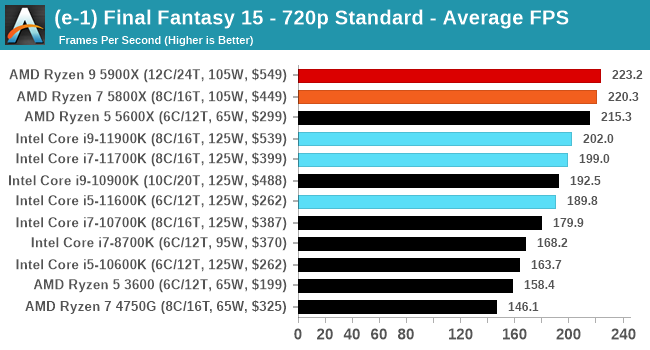 |
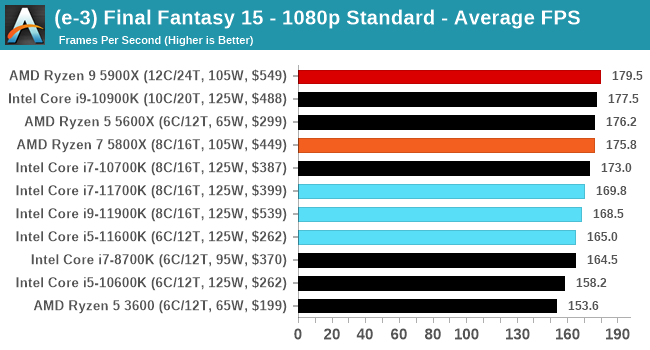 |
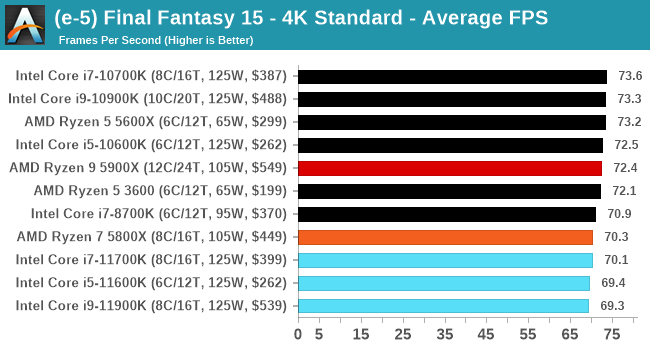 |
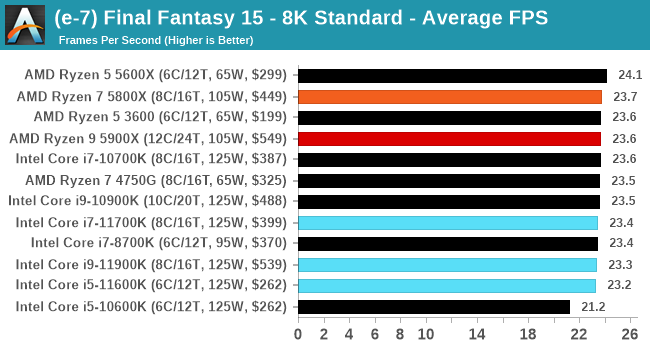 |
| 95th Percentile | 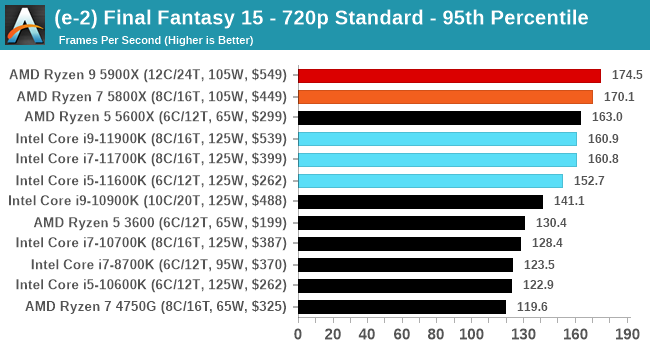 |
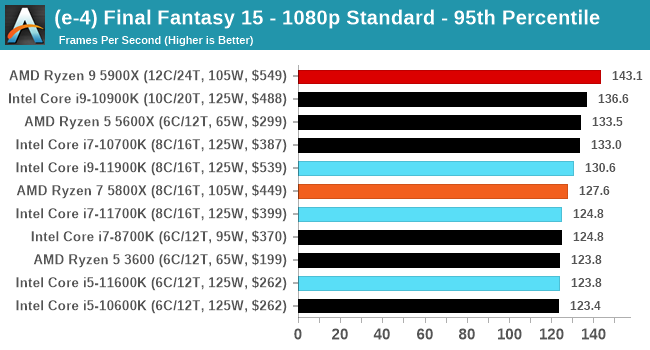 |
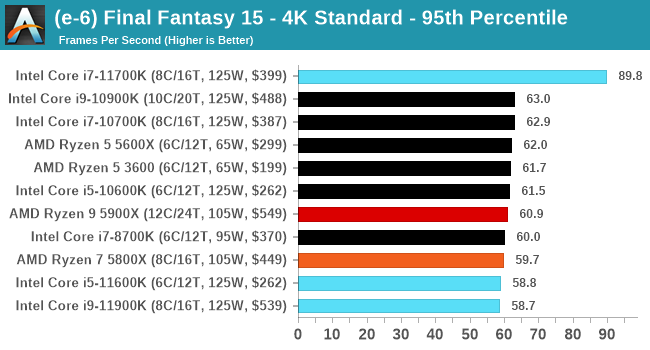 |
 |
All of our benchmark results can also be found in our benchmark engine, Bench.


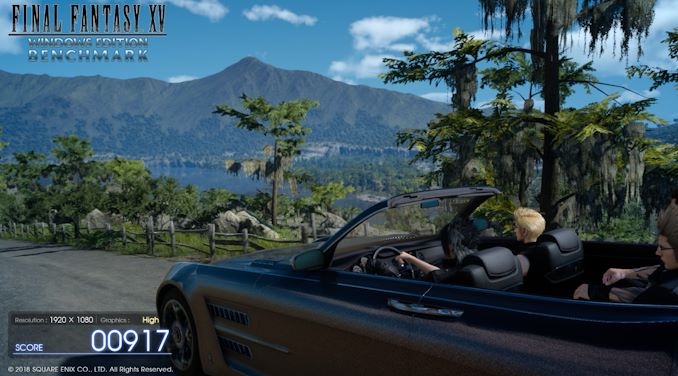









279 Comments
View All Comments
Hulk - Tuesday, March 30, 2021 - link
I have also been looking for iGPU tests?It's strange. It's like it doesn't exist.
eastcoast_pete - Tuesday, March 30, 2021 - link
Predictable results. I don't believe Intel back-ported to 14 nm because their 10 nm couldn't reach high frequencies, they back-ported because their yields at 10 nm aren't high enough and they had manufacturing capacity available at 14 nm. That made the expense of back-porting the design worthwhile.Regarding Rocket Lake, the most interesting CPUs in this lineup are the non-K i5, especially the ones that still have the 32 EUs enabled. Any chance you (Ian) can put one or two 11500 or 11600 through their paces. I would really like to also see how "35 W" the T models are. One of those, plus a decent, WiFi-enabled 560 MoBo for $100-130 could serve HTPC and office duties.
Otritus - Tuesday, March 30, 2021 - link
Rocket lake is an 8 core cpu based on the cypress (sunny) cove microarchitecture. Tigerlake H is an 8 core cpu based on the willow (sunny+) cove microarchitecture. Both have 32 Xe EUs. 10SF and 10ESF yields well (Intel is shipping much larger server processors just fine). The problem is 10SF seems to max out around 5Ghz which is the upper bounds of the 11700K. The slight clock bump of the 11900K lets Intel claim the fastest gaming cpu, which would not have been possible on Tigerlake H. 14nm having excess capacity was simply the cherry on top.goatfajitas - Tuesday, March 30, 2021 - link
I dont th9ink anything Intel has done here can be called "cherry on top" if anything we will look on this as a hot mess (pun intended). :PAntonErtl - Wednesday, March 31, 2021 - link
Intel shipping larger chips in their current 10nm processes does not disprove yield problems. If there is a flaw in a core on a 40-core die, jut disable the core (and another one) and sell it as 38-core CPU. If there are flaws in three cores, sell it as 36-core CPU, etc. Of course that's also possible and done for Tiger Lake, but there is also parts of the CPU where you have no such redundancy, but the area for these parts is not necessarily larger for the bigger dies, and the huge price for the big dies may make it economically more viable there than on the desktop.What makes me believe that either 10nm yield or 10nm capacity is not so great (or capcity is not reat because yield is not great) is that the announced Xeon W-13xx CPUs are going to be Rocket, not Tiger Lake; at 80W TDP, I expect that Tiger Lake would outperform Rocket Lake for most multi-threaded and (thangs to larger cache) some single-threaded workloads, yet they give us Rocket Lake,
Spunjji - Friday, April 9, 2021 - link
Intel arriving nearly 3 years late with Ice Lake SP and only managing "over 200,000" in the first 3 months isn't "just fine", it's pretty indicative that they're still struggling.We have no indication of ESF yields yet as there are no ESF products shipping yet.
Rocket Lake was ported when Intel couldn't get clock speeds *or* yields out of their 10nm process. If their yields and capacity for 10SF were as good as you're implying, we wouldn't still be waiting for Tiger Lake H to actually hit the market so long after Tiger Lake launched.
YazX_ - Tuesday, March 30, 2021 - link
4 years ago, AMD was broke, fighting for survival, targeting the poor and intel was the top dog and spit the same s.hit for the 10 years, fast forward now, AMD is the top dog and intel cannot even catch up.Regarding the review, yah as usual s.hit intel CPU that draws alot of power and still priced higher than AMD while offering less.
haukionkannel - Tuesday, March 30, 2021 - link
And Intel will be selling these much, much more than amd can their own...Intel just need to exist, to win amd in market share...
Qasar - Tuesday, March 30, 2021 - link
haukionkannel yep, only because its on the shelf, if/when ryzen 5000 supply gets better expect that to change. once that happens intel wont be selling that well. no one i know is even looking at intel right now, all waiting for zen 3.SkyBill40 - Tuesday, March 30, 2021 - link
You mean Zen 4?